Amazing volcanic lightning
Fun is like a flash of lightning tearing black clouds, and sparkles only for a moment; cheerfulness shines like day and fills the soul with solid and constant serenity "
- Joseph Addison , The Spectator
One of the most striking phenomena occurring in our atmosphere is lightning. In the video you can see in slow motion how in one hit between the clouds and the surface of the earth there is an exchange of electrons in an amount of about 100,000,000,000,000,000,000.
How does this happen?
Recall that every atom of the universe - including the atoms of our atmosphere - consists of a positively charged nucleus and a handful of negatively charged electrons. We usually consider neutral atoms in which the number of electrons corresponds to the number of protons in each nucleus, but this is not always the case.
')

Quite often, the atom is energetically preferable to become ionized, that is, to pick up or lose the electron (s). Sometimes an example of several ions is such a thing as table salt.
If you can separate these ions, you will create a charge separation, which will cause a voltage to appear. When the voltage, known as the electric potential difference , between the two sections becomes too large - even if there is only air between them - it spontaneously becomes a conductor , and you see a lightning, which is a fast exchange of charges!
You are familiar with lightning, which travels a great distance when the charge is transferred from the storm clouds down to the very surface of the Earth. But, as happened in the case of the eruption of the Eyjafjallajökull volcano, often volcanic eruptions also lead to the appearance of lightning, called a dirty thunderstorm or volcanic lightning.
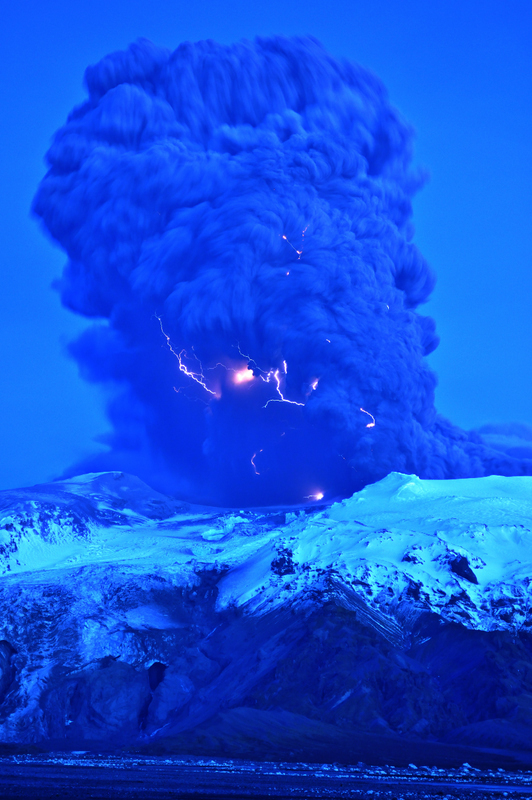
Over the years, there have been some amazing photos of volcanic lightning. My favorite, perhaps, will be a photograph from the eruption of Eyjafjadlayköd for a helicopter.

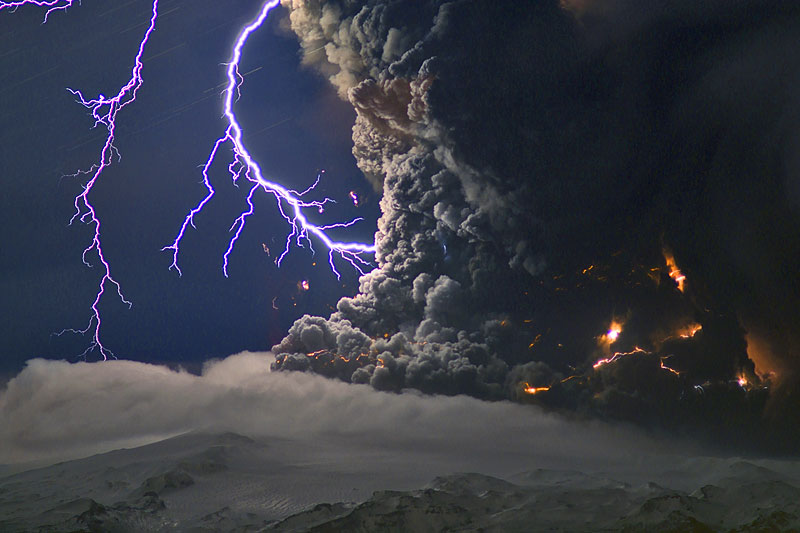
Historically, it was very difficult to catch the moments of volcanic lightning, but still such photos were taken many times already for different volcanoes.
For example, here are photos of the Chilean Chaiten Volcano, taken during its eruption in 2008 - the first in 9000 years!

Incredibly active in the modern history of the Japanese volcano Sakurajima , which has erupted almost continuously since 1955. In 1960, a volcanic observatory was founded to observe it, and she witnessed the repeated occurrence of lightning, including in 1988.

The film captured even lightning during the eruption of Vesuvius in 1944 !

I would like to tell in detail how volcanic lightning works, but, frankly, we do not know this 100%. This question is still being actively studied .
But as a theoretical physicist, I can fully describe for you the general picture of what is, most likely, happening.

Step 1 - most of the atoms are neutral. But in the presence of large amounts of free energy, there are no problems in order to knock out electrons from some atoms that hold on to them not very much. At the same time, these electrons will be captured by other suffering atoms (step 2).
There are no problems with this part - we are talking about a volcano!

Yasur - an active volcano on the island of Tanna (Vanuatu), 2010
At temperatures of the order of 1500 K, there really will be no shortage of energy in order to knock out electrons from some atoms. The electrons knocked out will pick up other atoms, which will create a large number of positive and negative ions.
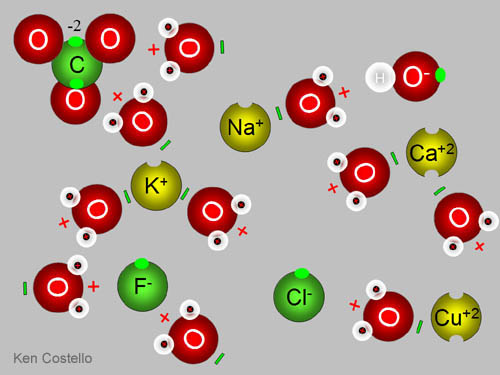
The key and necessary moment is the separation of negative and positive charges (step 3). You need to divide enough ions, and dissolve them at a sufficiently large distance to achieve a potential difference that can cause lightning (step 4). If we can do this, we can create volcanic lightning.
How do we separate these charges? Recall that we have a bunch of ionized atoms, both positively and negatively charged, in a hot and turbulent medium. Various elements appear in it, rising from the bowels of the earth.

It can be immediately noted that these elements differ from each other both in mass and in radius. All of them should have a high temperature, and after they escaped from the vent of a volcano, their temperature should fall. And this is very important for the velocities of the considered atoms / ions.

On average, atoms and ions emitted from a volcano move faster first, and then cool down and begin to move more slowly.
This in itself does not mean much, but two important factors come into play, facilitating the separation of positively and negatively charged ions. First, these ions are very different in mass!

The larger the atomic mass of an element, the slower it moves from, even if its temperature is comparable to a lighter element! Many things follow from this, including the fact that heavy ions have more inertia and it is more difficult for them to change the impulse. So these slow moving heavy ions will not move at all like fast and light ones. Moreover, this position will be maintained at different temperatures!
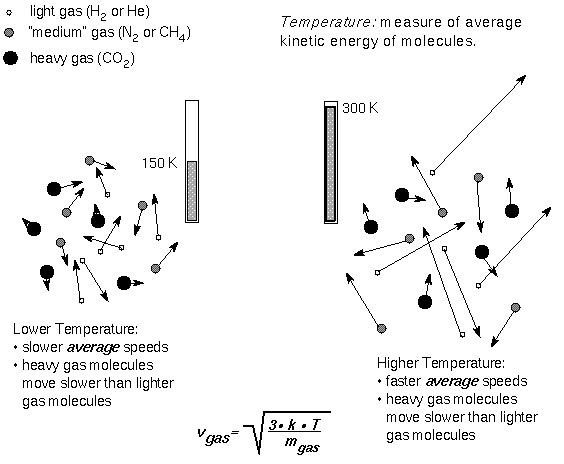
The second very important factor facilitating the separation of ions is a huge difference in size, and therefore in cross sections between positive and negative ions.
Of course, different elements and size is different. But ions behave more radically. Let's see exactly how.

Usually, negatively charged ions are huge, and positively charged ones are tiny! Why? If you place more electrons in an atom, they will repel each other, and the nucleus (which has fewer protons than electrons) will not be able to hold electrons in such a space inherent in a neutral atom, therefore the atom increases in size. On the other hand, to get a positively charged ion, you need to knock electrons out of an atom, and the nucleus (in which there are more protons than electrons) keeps electrons more compact!
This means that the negative ion cross section will be larger than the positive cross section, and, therefore, they will behave completely differently.
If you combine all these facts: ions of different masses, moving with different average speeds and having different cross sections in an environment with a temperature gradient - and here is the separation of ions! And what do we get as a result?

Volcanic lightning! All photos are further taken in Chile, in June 2011. This is one of the newest and most beautiful photos of volcanic lightning. Enjoy!

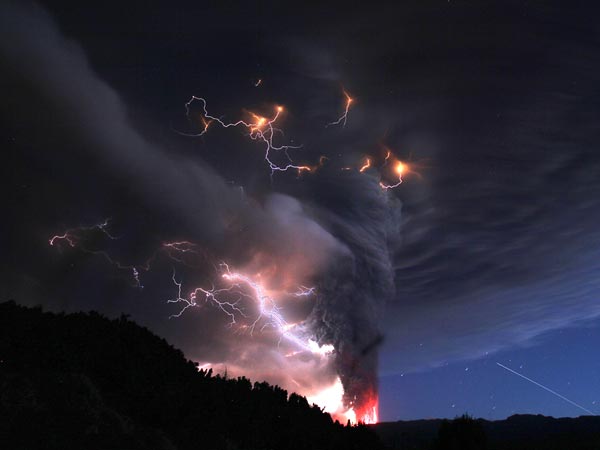



As a bonus on Google+ you can see a whole album of photos of volcanoes and volcanic lightning!
Source: https://habr.com/ru/post/402575/
All Articles